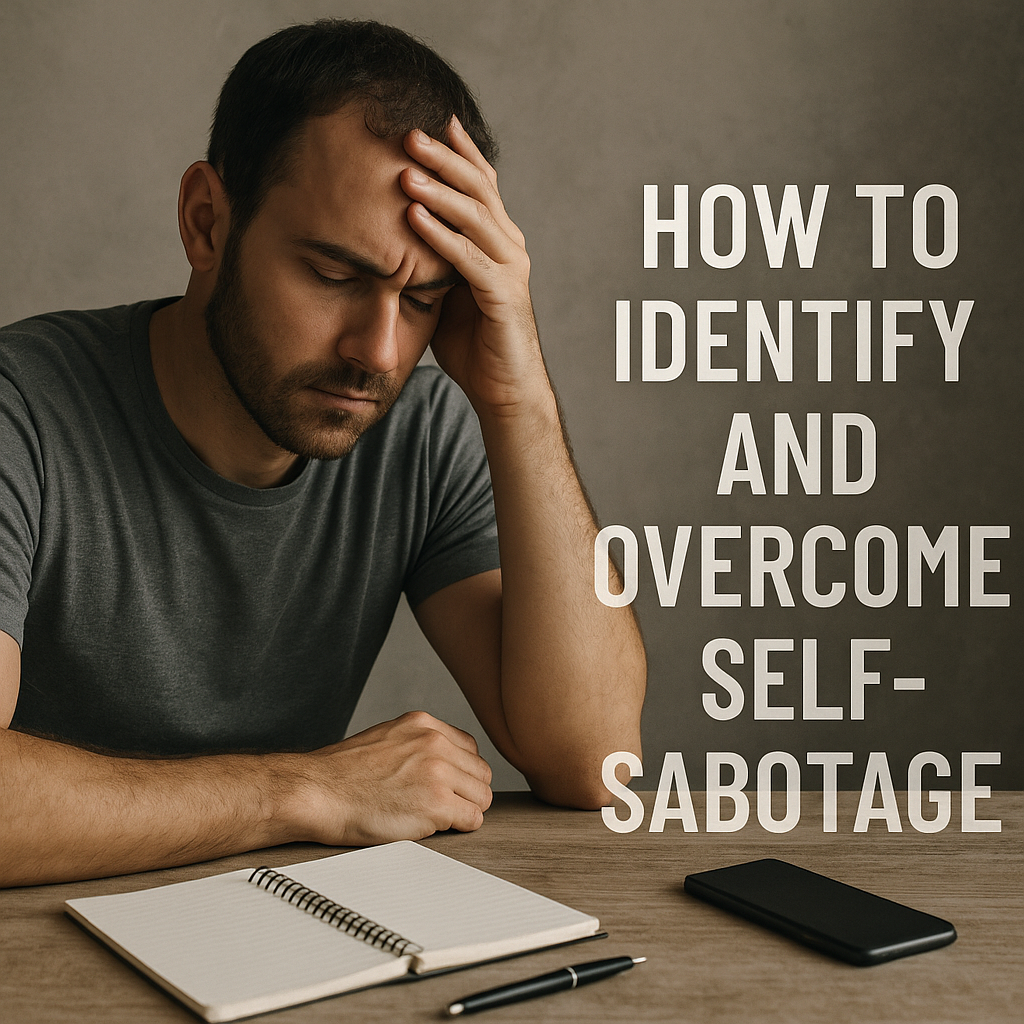Have you ever set a goal and then found yourself doing the opposite of what would help you achieve it? Maybe you procrastinate, talk yourself out of opportunities, or break your own commitments — even when you deeply want success.
This is called self-sabotage, and it’s more common than you think. It’s not about laziness or lack of discipline. It’s often rooted in fear, limiting beliefs, and old emotional patterns.
In this article, you’ll learn how to recognize self-sabotage and develop the self-awareness and tools to break free from it.
What Is Self-Sabotage?
Self-sabotage is any behavior or thought pattern that:
- Undermines your goals
- Conflicts with your values or intentions
- Leads to regret, frustration, or stagnation
It might show up as:
- Procrastinating important tasks
- Picking fights in healthy relationships
- Avoiding success or visibility
- Breaking routines that were working
The worst part? You often don’t realize you’re doing it — until the damage is done.
Why We Self-Sabotage
Common roots of self-sabotage include:
- Fear of failure or success
- Low self-worth or feeling undeserving
- Fear of judgment or abandonment
- Difficulty tolerating discomfort or success
- Subconscious loyalty to past pain or beliefs
Self-sabotage is not a flaw — it’s a protective strategy gone wrong.
1. Recognize Your Patterns
The first step is awareness.
Ask yourself:
- When do I tend to pull back from progress?
- What habits seem to derail me over and over?
- What thoughts come up when things start going well?
Examples:
- “This won’t last.”
- “I don’t deserve this.”
- “I’ll mess it up anyway.”
Pattern recognition is key to change.
2. Identify the Trigger Behind the Behavior
Self-sabotage often follows a trigger, like:
- Stress or overwhelm
- A new opportunity or level of success
- Conflict or vulnerability
- Fear of being seen or judged
Next time you sabotage, pause and ask: “What was I feeling just before this happened?”
3. Challenge the Inner Critic
The voice behind sabotage is often your inner critic.
It says things like:
- “Who do you think you are?”
- “You’re not good enough.”
- “Don’t bother — it won’t work.”
Respond with compassion:
- “Thank you for trying to protect me, but I choose growth now.”
- “It’s okay to be uncomfortable — I’m safe.”
- “I deserve to show up fully.”
You don’t have to silence the voice — just stop believing it.
4. Replace Sabotage With Small Aligned Actions
Instead of trying to completely stop a behavior, redirect it.
Examples:
- Instead of scrolling: 5 minutes of journaling
- Instead of perfectionism: finish the draft and revise later
- Instead of ghosting: send one honest message
Small, consistent actions break old cycles.
5. Heal the Underlying Belief
Most sabotage is driven by beliefs like:
- “Success will make me unlovable.”
- “If I shine, people will leave.”
- “If I fail, I’ll lose everything.”
Ask:
- “Where did I learn this?”
- “Is this true today?”
- “What belief would support me better now?”
Replace fear-based programming with self-affirming beliefs.
6. Practice Emotional Regulation
Self-sabotage often happens when emotions feel too intense.
Regulate yourself with:
- Deep breathing
- Short walks or physical movement
- Grounding techniques (like naming what you see and hear)
- Talking to a safe person or journaling
Regulation = freedom to choose better responses.
7. Set Realistic Expectations
Sabotage thrives when goals feel overwhelming or unattainable.
Instead of “I’ll write a book this month,” try “I’ll write for 15 minutes today.”
Break goals down into sustainable steps. Let progress, not perfection, be your target.
8. Create Supportive Environments
Make sabotage harder to access.
Try:
- Setting up accountability (friend, coach, group)
- Removing distractions from your workspace
- Keeping healthy routines visible and easy to start
- Celebrating small wins — often
Environment influences behavior more than willpower.
9. Rehearse the Opposite Identity
Ask:
- “How would someone who trusts themselves act today?”
- “What would my highest self do in this moment?”
- “If I believed I deserved success, what step would I take now?”
Identity-based change rewires your habits from the inside out.
10. Be Kind When You Fall Back Into Old Patterns
You will sabotage again — but you don’t have to stay stuck.
When it happens:
- Pause. Breathe.
- Reflect without shame: “What was I trying to avoid?”
- Recommit: “What’s one thing I can do differently right now?”
Compassion creates space for new choices.
Final Thought: You Don’t Need to Be Fixed — Just Reconnected
Self-sabotage isn’t a sign that you’re broken. It’s a sign that part of you is scared — and trying to stay safe in the only way it knows how.
Listen to that part. Then lead it forward with care, courage, and intention.
Because you’re no longer living from fear. You’re choosing to grow.
